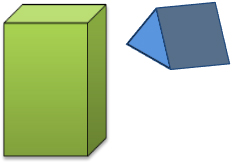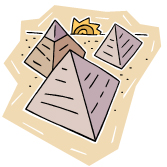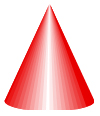
The volume of a 3-dimensional solid is another important attribute. Volume is the amount of space that a 3-dimensional object takes up.
In this lesson, you will examine different ways to find the volume of 3-dimensional objects, including prisms, cylinders, pyramids, cones, and spheres.
Prisms are 3-dimensional figures with congruent bases that are polygons and that have lateral faces in the shapes of parallelograms.

Cylinders are 3-dimensional figures with congruent bases that are circles and have a curved lateral surface that unfolds to be the shape of a rectangle.

Pyramids are 3-dimensional figures with only one base that is a polygon. The lateral faces of a pyramid are triangles that all meet at the vertex of the pyramid.

Cones are 3-dimensional figures that, like pyramids, have only one base, but that base is a circle. The lateral surface of a cone is curved and comes to one point at the top of the cone, called the vertex of the cone.

Spheres are 3-dimensional figures with one completely round surface. Every point on the surface of a sphere is the same distance from the center of the sphere, so a sphere looks like a round ball.

The volumes of these 3-dimensional figures are related in special ways. You will investigate those relationships in this lesson, as well as examine different ways to determine or express the volume of 3-dimensional figures.